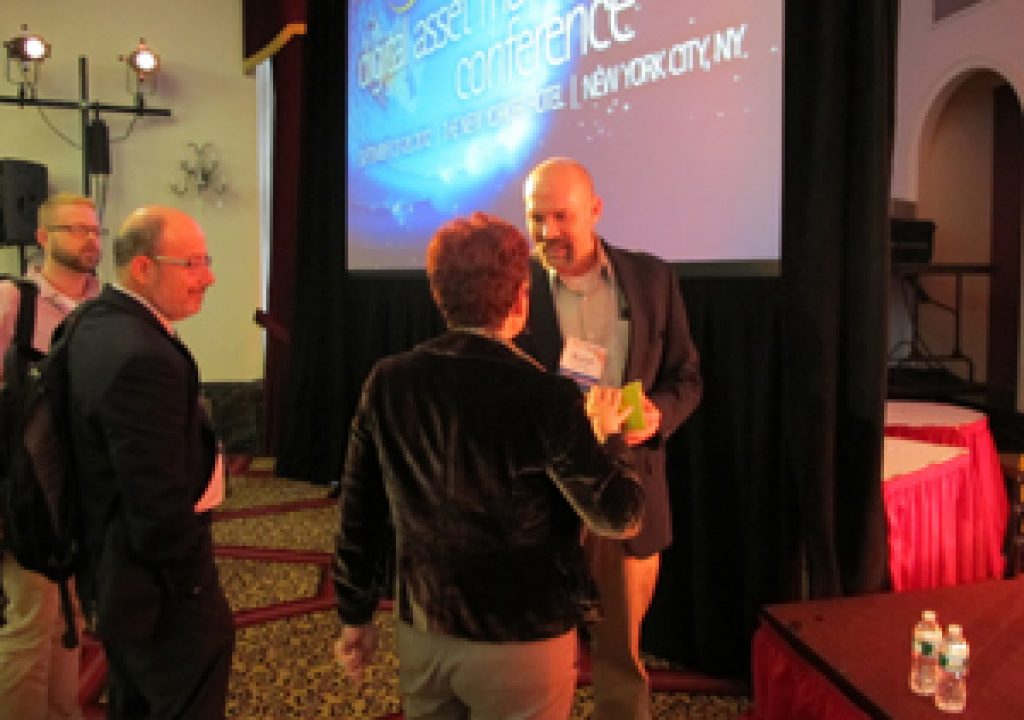As digital preservation and stewardship professionals, we approach digital objects from a unique perspective. We evaluate the long-term value of any particular digital object and work to develop a technical and social infrastructure that will enable us to successfully preserve the objects over time.
Preserving and providing appropriate access are our primary functions, but no matter how you look at it we’re still managing digital assets; we just do it at a particular stage in the digital lifecycle.
So how is what we do different from what digital asset managers do?
Well, surprisingly, there are more similarities than differences, as I discovered when I traveled in late September to New York to participate in the Digital Asset Management conference. DAMNY brought together media management professionals from advertising, broadcasting, entertainment, publishing, libraries and archives and retail to discuss ways to maximize the value of digital materials under their control and also discuss challenges around the storage, security and preservation of those materials.
“Digital Asset Management” is a tough term to define, seeing as its a marketing term as much as anything else. Designers of software tools are always working to differentiate their products in the marketplace and to be able to claim “best of breed” status for whatever vertical they define. DAM as a category is no different, but beyond the surface confusion there are real differences in what DAMs do versus other differentiations such as Enterprise Content Management, Document Management or Content Management Systems.
DAM focuses to a greater degree on complex content and on maximizing the ability to access and reuse it. “Complex content” generally means multimedia (which the advertising industry often calls “rich media”), including images, video, audio and materials with a dynamic complexity. DAM tools also concentrate to a greater degree on integration with creative authoring tools (such as layout, design and video and audio editing applications) to allow asset managers ready access to their content storage infrastructure for re-use purposes.
Multimedia complexity challenges DAMs in their “day jobs,” but it’s even more challenging as they start to address longer-term preservation and stewardship issues.
Finishing the presentation.
Which is where my presentation (PDF) came in. I focused on the incentives to preserve digital content that are shared between DAMs and preservation professionals (libraries, archives and museums, or “LAMs” for short).
The differences come down to the type of data being preserved (proprietary for DAMs, largely open for LAMs); the purpose of preservation (monetization for DAMs, knowledge-sharing for LAMs); and the time horizon (shorter for DAMS and longer for LAMs), but the technology, standards and infrastructures for “doing” digital preservation are largely the same. LAMs have a lot of preservation knowledge we can share with DAMs, but we have to convince them that they’ve got incentives to preserve for the long term.
With that in mind, I posited 5 shared incentives to preserve for DAMs and LAMs:
- Self-Interest Paradox (By acting selfishly for yourself, you help others accidentally)
- Happy Data, Happy Users (For social media services, the more control users have of their own data the happier they’ll be as participants)
- Open Infrastructures (Openness in general can lower costs and expand possibilities)
- A National “Collaboration Engine” (The National Digital Stewardship Alliance)
- The Karmic Wheel (What comes around, goes around)
The surprising thing is that DAMs are already considering many of these issues in their work. There was quite a bit of discussion throughout the conference on the challenges of big data and on storage infrastructures for both short- and long-term preservation, including an excellent presentation (PPT) from NDSA member WGBH on their open source digital asset management system for media preservation.
One key initiative in the DAM community that was much-discussed was the Publishing Requirements for Industry Standard Metadata (PRISM), a specification that defines a set of XML metadata vocabularies for syndicating, aggregating and multi-purposing publishing content (magazine, news, newsletter, marketing collateral, catalog, mainstream journal content, online content and feeds). PRISM was initiated in 1999 and is under the maintenance of the IdeaAlliance, a not-for-profit membership organization that “advances core technology to develop standards and best practices to enhance efficiency and speed information across the end-to-end digital media supply chain.” These are efforts that the digital stewardship community should monitor.
There are strong similarities in the work that DAMs do and the work that LAMs do, with numerous opportunities for collaboration. Let’s find more opportunities to meet and learn from each other.

